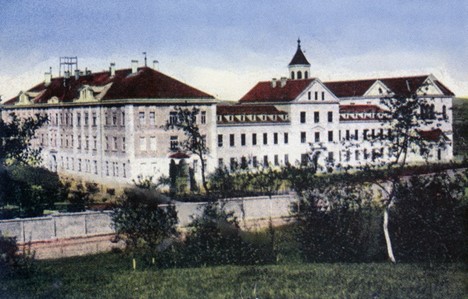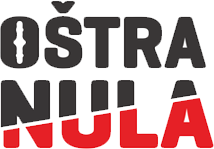The pioneers of industrialization in Banja Luka, who brought electricity to the small town on the Vrbas River before Zagreb and Sarajevo, and educators who for decades taught impoverished children, have been pushed to the margins of public memory 155 years after their arrival. Today, the monastery is home to only two monks from what was once a thriving community, and only the Banja Luka Diocese preserves the legacy of the Mariastern Abbey.
The history of Banja Luka is inextricably linked to the history of the Trappist monks, who have been present in this region for 155 years. Through their vision and dedication, they gave a new face to the small, sleepy Bosnian kasaba (town) that Banja Luka was in the second half of the 19th century. The settlement of Delibašino Selo, where they established the Mariastern Abbey, became a center of industrialization for the region and for all of Bosnia and Herzegovina.
The settlement of Trappists near Banja Luka was the work of Austrian Trappist Abbot Franz Pfanner from Bregenz (born in 1825). Known in Banja Luka as Franjo, Franz attended secondary school in Feldkirch and pursued humanistic studies in Innsbruck. Later, he studied philosophy in Padua (1845) and theology in Brixen (1846).
Historians describe him as an unusually active and determined individual who set himself the mission of establishing a new Trappist monastery in the Austrian lands. To achieve this, he traveled extensively through Hungary, Croatia, and Slavonia, searching for a suitable location for a new settlement. After his request was denied by the Viennese Ministry and the Croatian Parliament, he turned his attention to Ottoman Bosnia.
In 1869, Father Franz Pfanner, along with six of his monks, settled in Delibašino Selo in a small hut affectionately referred to as “The Cradle”.
“This was both their dormitory and dining room, and they celebrated Holy Mass in a hut at the cemetery of St. John the Baptist. Soon, the monastery named Our Dear Lady Mary, Star of the Sea was built, which, by the time of the First World War, became the largest Trappist abbey in the world”, says Monsignor Ivica Božinović in the introduction to his essay dedicated to the history of the Trappist order in Banja Luka.
“The first Trappists arrived at their new home with great effort (…). One of the huts stood completely empty; the tenant used it as a stable for calves and sometimes for distilling brandy. He also kept pigs there. I asked him, and he allowed us to use the hut for living. And I led my brothers into such splendor”, described Franz Pfanner, recounting the harsh beginnings of their life in Bosnia.
Father Franz, Božinović notes, held a monastic chapter on June 27, 1869, during which he and his brethren decided to build a new temporary monastery on the plains near the Vrbas River, alongside the Raškovac stream.
“They were aware that they could not face the winter in the small wooden barn. Father Franz designed the building for the new monastery and hired Grgo Stilić, a carpenter, who committed to building it by September 8. However, in addition to the short deadline, numerous other troubles befell the small monastic community. The rains kept pouring, the bricks they made in their own brickyard were falling apart, the roads were muddy… On top of everything, illnesses also loomed. One postulant (candidate) died. Despite everything, on Nativity of Mary holiday, September 8, they managed to move into their new temporary monastery. They no longer lived in a barn. The monastery was modest, to be sure, but it had a separate dining room, a room for the prior, a kitchen, a porch, a storage room, and a small chapel. The attic served as a dormitory for everyone. They still slept on ferns, but at least there was enough space for them to stretch out. Admittedly, in winter, when getting up for night prayers, they sometimes had to shake the snow off their blankets, which the wind had blown in through the weak roof”, says Božinović, citing the archives of the Mariastern Abbey.
But the initial hardships did not discourage the monks, and immediately after moving in, the construction of utility buildings began. First, a blacksmith’s shop with a workshop for plows was built, followed by a small hospital, a guest room, a small granary, and a stable for horses and cows. That same fall, the area around the monastery was leveled, and a cart path was made.
Construction of the New Monastery
At the end of 1869, Father Franz traveled to Rome to obtain permission for the establishment of a new monastery. He succeeded. The decree establishing Mariastern Abbey was issued from Rome on March 7, 1870. The Trappists were permitted to care for orphans and youth, offering them the opportunity to learn trades. In the spring of 1870, work began on the construction of the real, future monastery.
Due to the construction needs, a quarry was opened. The monastic community was growing. Father Franz created the architectural plans. The builders, masons, and brickmakers were mostly Croats and Italians. All the monastic brothers worked tirelessly, but Father Franz had the most demanding role, as he was the only one who could speak the “Bosnian” language. Brother Zaharija went out begging for donations, as the expenses were substantial. The construction progressed well, and it seemed likely that the monastery would be ready for occupancy by the fall. However, one day, the Pasha of Banja Luka appeared at the construction site, furious, accusing Father Franz of building a fortress with bunkers and crenels. He ordered that work be stopped immediately and demanded that Father Franz appear in court the following day. Hearing the intense argument between the Pasha and Father Franz, the brothers were deeply alarmed and concluded that the monastery would never be completed. Some even began discussing the possibility of leaving. “But I tell you, the monastery will be finished!” said Father Franz determinedly. “Do you think I will give up just because some bloated Turkish Pasha stupidly mocks me? No, no! I do not surrender so easily. You will see!”
Later that same year, Pfanner secretly traveled to Constantinople, disguised as a Turkish bey, where he obtained permission to build a “house with 60 rooms”. The monastery was completed in 1870.
In the 1920s, a new monastery was built, which remains in existence today as an institution with a church. The old monastery was repurposed by the Trappists in 1885 and converted into an orphanage.
The Trappist order was far more than a group of people devoted to faith and prayer. With the motto “Work and pray”, they began cultivating an entrepreneurial spirit to ensure economic stability and independence, as well as to fund charitable activities, including the orphanage and a home for young scholars (future craftsmen).
The Beginning of Industrialization
After restoring some of the old utility buildings and constructing new ones, the Trappists registered their industrial beer production on June 6, 1894, at the District Court in Banja Luka.
“In the fall of that year, they undertook preparatory work for the construction of a new brewery, based on designs created by Mr. Prunner, the manager of the Puntigam Brewery. The main construction work began in June 1895. They were determined to have the building roofed before winter. However, on September 14, the work was halted due to the tragic death of four workers during the construction of the upper vaults. At that time, two lower vaults and the central wall collapsed. The construction was stopped. It wasn’t until March 15, 1896 that the police and the commission investigating the cause of the accident completed their work. Afterward, clearing of the ruins began. The foundations were repaired, additional reinforcements to the walls were made, and by fall, the new building was roofed. The following year, new modern cellars for aging beer were constructed. Above them, facilities for a fulling mill were built. Experts from the Czech Republic handled the installation of the brewery equipment. The Trappists collaborated extensively with the Czechs and based their beer production technology on Czech brewing expertise. The development of the Trappist brewery owes much to Elegijus Blavart, a Czech brewer, who taught brewing-related technical subjects to students of the trade extension school located in the Dom Naučnika (Scholars’ Home)”, writes Božinović.
The new brewery building was completed in the winter of 1897/98. During 1898 and 1899, the Trappists distributed their beer to Gradiška, Tešanj, Pribinić, Teslić, Prijedor, Kotor Varoš, Bosanski Novi, Varcar Vakuf, Jajce, Travnik, Krupa, Livno, Bihać, Sanski Most, Dubica, Dobrljin, and, of course, primarily to Banja Luka.
Pfanner, together with his brothers, was a tireless builder, as evidenced by everything they constructed over a ten-year period: a brickyard and a forge with a workshop for plows (1869), a silo and a quarry (1870), a mill and a plum drying facility (1872), a cheese factory, a sawmill, and a brewery (1872–1873), a fruit drying facility (1876), a brick and tile factory (1877), a slaughterhouse (1877), a bone grinding mill and a glue factory (1877), a fruit and forest nursery, and a woolen cloth factory with a spinning and weaving facility (1878). They also established a printing house with a cardboard production and bookbinding facility, as well as a cooperage, carpentry, and wheelwright workshop (1879).
A new woolen cloth factory was built in 1897, and it began operations alongside the brewery in 1898.
In addition, they founded a hospital and a public kitchen, built housing for workers, constructed a school and provided vocational training, and opened a dairy, a pasta factory, a granary, a forge, beehives, nurseries, a cow stable, a bakery, a leather and dye factory, a cold storage facility, a carpentry workshop, and more.
Steam Engine
The new facilities required stronger driving power. Therefore, in 1885, Abbot Dominik, as recorded in the archives of Mariastern Abbey, purchased a 50-horsepower (HP) steam engine from the Administration for the Regulation of the Danube Cataracts near the Iron Gates in Orșova, Romania. The engine was purchased for 5,000 forints. Although the engine itself was not expensive, the transport from Orșova to Banja Luka cost an additional 1,000 forints.
After the steam engine was delivered to Banja Luka, the abbot contacted the Vienna-based company “Schuckert” to request a design for producing electricity using the steam engine, which would power his industrial facilities and illuminate the monastery rooms. A special room was constructed to house the batteries and other necessary equipment. The lighting, of course, was powered by direct current.
And There Was Light in Banja Luka
The first light bulbs in the monastery lit up on March 27, 1899. The initial lighting was not very strong, but it was undoubtedly a historic day for Banja Luka, as the city received electric power before Zagreb and Sarajevo! However, it quickly became evident that the steam engine purchased was not powerful enough to meet the demands of the brewery, the woolen cloth factory, the renovated mill, and the monastery’s lighting. Additionally, it consumed large quantities of wood and coal. It became necessary to consider a more economical method of electricity production.
The First Hydroelectric Power Plant on the Vrbas
According to the plan of the “Schuckert” company, a hydroelectric power plant was to be built on the Vrbas River to provide a sufficient amount of cheaper electricity. For this purpose, the Trappists constructed a new building on the Vrbas and, during the summer of 1899, began building a wooden dam to block the river. The work progressed quickly and efficiently, and by November of that year, the company “Fahndrich” from Mödling, near Vienna, installed turbines (water wheels) with a capacity of 60 horsepower (HP). “Thanks to this, the Mariastern Abbey with its facilities in Delibašino Selo resembled a fairytale city at night – an abundance of light in the darkness awakened in the people of Banja Luka a desire to also benefit from the products of civilization” (A. Ravlić). The steam engine then became merely a “backup” for times of high water levels in the Vrbas when the turbines could not operate.
In 1902, the administration of the military railway in Banja Luka-Suburb asked the Trappists to illuminate both tracks, the administration building, and the workshop using their electricity. The Trappists granted this request. Houses of some prominent citizens, mostly near the Suburb, were also illuminated.
Numerous citizens of Banja Luka subsequently requested lighting for their homes, but it was not possible to accommodate them due to the insufficient power of the existing turbine.
In 1910, Abbot Dominik acquired a new turbine with a capacity of 300 horsepower (HP). New power lines were installed to transmit electricity according to the most advanced technical standards of the time. With this, they were able to supply the entire city with the much-desired electricity.
“Thanks to this, electricity definitively ‘walked into’ Banja Luka, into the city, and life for the people of Banja Luka began to change significantly” (A. Ravlić).
Recently, retired Banja Luka bishop Franjo Komarica shared an interesting detail: the authorities in the Republic of Srpska entity of Bosnia and Herzegovina did not allow the restoration of Banja Luka’s first hydroelectric power plant. The Trappists had intended to restore it to its original form and had even found a donor for the project. It seems incredible that the restoration was not permitted, even though it would have been a major tourist attraction, considering that Banja Luka was one of the first European cities to have electric power.
The Mill
The Trappist mill was operating well at the time, but with the existing machinery, it could not meet the demands of the market, and new machines required stronger electricity. Additionally, the mill building was old and too cramped for any modernization. Therefore, in 1910, the Trappists built a new mill with a grinding capacity of 2.5 wagons of grain per day.
The Bridge
Transportation across the Vrbas River had been a significant challenge for the Trappists since their arrival in Delibašino Selo. The ferryboat purchased by Father Franz, which was used to transport people and goods across the river, became the subject of frequent legal disputes initiated by neighbors against the abbey. In 1892, Abbot Bonaventura I wanted to build an iron bridge, but he deemed the terms proposed by the Provincial Government unfavorable for the monastery and abandoned the plan. The abbey’s estate had expanded to the left bank of the Vrbas in 1877 with the purchase of a large property from Ahmed Nuri. Over time, the estate grew, and so did the abbey’s agricultural activities. The use of the ferry became a daily necessity. During the summer, the Vrbas’s low water levels allowed only one loaded wagon to be transported across at a time. Under normal water levels, two wagons could be ferried, but during high water levels, transportation was impossible. During harvest season, loaded wagons would wait for hours to cross.
Abbot Dominik, recognizing the importance of a bridge for the abbey’s economic progress, began negotiations with the government in Sarajevo when he became abbot of Mariastern Abbey. As a result, a bridge connecting the left and right banks of the Vrbas in Delibašino Selo was constructed in 1904.
The School Gains Public Status
From the beginning of his tenure as abbot, Abbot Bonaventura II took particular care of the school, which operated regularly within the orphanage. At that time, the school was called: “The ‘Mariastern Abbey’ Orphanage and Roman Catholic Primary School”. In the fourth grade, the following subjects were taught: religious studies, Croatian or Serbian language, arithmetic, geography and history, natural sciences, penmanship, geometry and drawing, economics, singing, and gymnastics. Students were evaluated in the following manner: conduct – very good, good, fair, or poor, attendance – very diligent, diligent, irregular, or negligent, achievement – very good, good, sufficient, or insufficient.
From the 1922/1923 school year onward, the school’s certificates included the name: “The ‘Marija Zvijezda’ Orphanage and Roman Catholic Primary School in Delibašino Selo with public status, according to the order of the Provincial Administration for Bosnia and Herzegovina in Sarajevo, dated June 19, 1922, No. 59.371/1922./IV-3”.
From that time, the school also admitted “external students”, who were primarily from Banja Luka and its surrounding areas.
Teachers – Secular Individuals
A student wrote: “Our teachers are not Trappists but secular individuals who only come to us during class hours”. A chronicler notes that the “enthusiastic and conscientious teacher” Franjo Žak joined the school on September 15, 1921.
The school was regularly supervised by educational inspectors.
In 1928, the orphanage celebrated the 50th anniversary of its existence. From its founding until this jubilee, 2,166 orphans passed through the orphanage and completed their schooling there. Additionally, 41 external students attended the school.
Thanks to the Trappists, Banja Luka, and the western regions of Bosnia in general, gained their first higher education institution in 1907 – the High School of Philosophy and Theology, which was the first faculty in Banja Luka. This year could, in fact, be considered the founding year of the University of Banja Luka.
The Beginning of the End
Near the end of World War II, on December 31, 1944, the Trappists suffered a devastating attack, as noted by Ivan Lukenda in an article for FRAMA:
“The monastery was seized and engulfed in flames, along with the stables and other buildings. At night, the monks would cross to the left side of the Vrbas River, sleeping in family homes, and some temporarily stayed with the sisters at the Nazareth convent. Postwar hardships seemed endless – some Trappists were convicted and imprisoned, others were sent to concentration camps, and many had to leave Bosnia for other countries. All their land was confiscated. The monastery church was turned into a military warehouse. Around 20,000 books, written in eight to ten languages, were burned, and the statue of St. Bernard was thrown into the Vrbas”.
After the war, when the communist authorities confiscated their property, the abbey was converted into an orthopedic clinic, which remains there to this day. It should be noted that this is not the first, but the third orthopedic facility at the same location, as the history of Mariastern Abbey has always included a hospital.
Today, the monks only use the rooms in the attic of the church. Following earthquakes in 1969 and 1981, the present smaller buildings with a chapel were constructed. As a result, the Trappists now use only the church and a small portion of the land around it, including the cemetery.
Banja Luka is a city that easily renounces its past, with every societal system and new government writing its own history while neglecting the legacies of previous generations.
Thus, Lukenda warns that “the cries from Mariastern Abbey have not yet been silenced”. Unfortunately, this parish has also suffered human losses during the last war, as a significant number of people left their homeland. Once a community that fed and uplifted this city, it has now been reduced to just two monks, whose future grows increasingly uncertain and precarious with each passing day.
Mariastern Abbey, despite its entire journey in Banja Luka, will forever be remembered as a place that contributed to this city and region through human development and labor, in all its forms—whether spiritual, moral, educational, or material support. As M. Brooz said, the Trappists serve God, benefit the people, work in the fields, and choose the most desolate places to cultivate.
OUR HIGHLIGHTS
The Church of the Trappist Monastery – “Mariastern Abbey” (The Church of the Assumption of the Blessed Virgin Mary), along with its movable property, has been a National Monument of Bosnia and Herzegovina since 2004.
The decision was made by the Commission to Preserve National Monuments during a session held from January 20 to 26, 2004. The commission members included Zeynep Ahunbay, Amra Hadžimuhamedović (Chairwoman), Dubravko Lovrenović, Ljiljana Ševo, and Tina Wik. They declared the abbey a national monument of Bosnia and Herzegovina.
The movable property consists of the following: a pinacotheca with 16 paintings, a glyptotheca with 6 sculptures, 20 textile items, 42 objects made of metal, 15 pieces of household and liturgical furniture, and 96 books.



